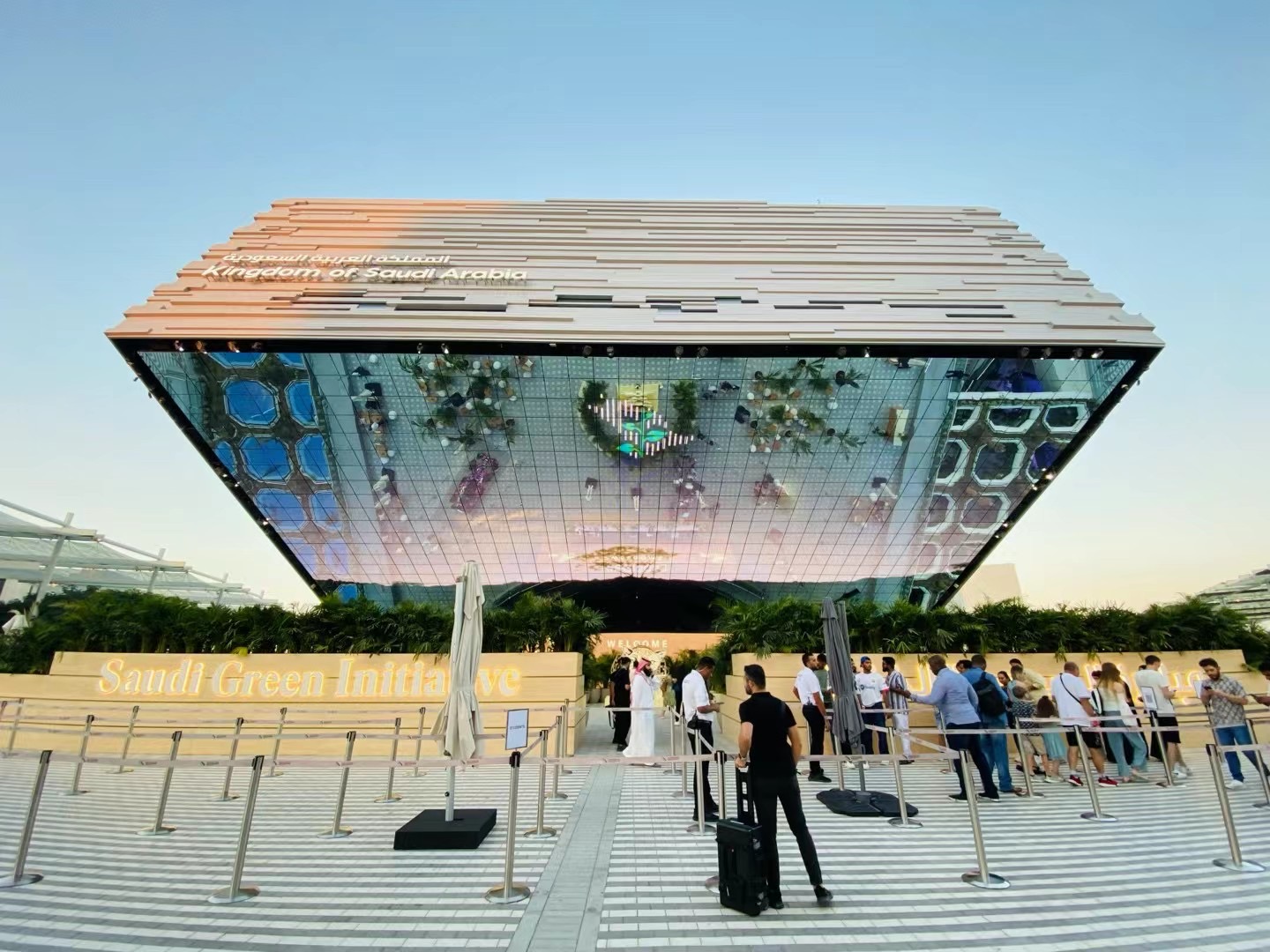BEIJING, Dec. 21 –As the climate conference hosted in the hottest year ever recorded, the 28th session of the Conference of the Parties (COP28) to the United Nations Framework Convention on Climate Change (UNFCCC) has attracted more than 80,000 participants globally, making it the largest ever UN climate summit to date.
Alongside the national delegation, numerous institutions, businesses, and observers from China also have attended the global event to establish pavilions and holding related events. The China Pavilion, opened on November 30 by the Chinese delegation and the All-China Environment Federation, in partnership with LONGi Green Energy, a Chinese solar leader, set up the Solar+ Pavilion in the Blue Zone at COP28.

COP28 President Sultan Ahmed Al Jaber announced that nearly 200 party representatives agreed to a UAE Consensus in the field of climate change, which is “historic.”
Although the final agreement text does not mention the “phasing out of fossil fuels” required by western countries and low-lying island countries most vulnerable to rising sea levels and tropical storms, it is proposed that all countries should reduce the energy system’s dependence on fossil fuels in a fair, orderly and equitable manner, and accelerate action in this critical decade to achieve net-zero emissions consistent with science by 2050. The agreement also calls for tripling global renewable energy capacity by 2030 and accelerating the development of technologies such as carbon capture and storage. Jaber emphasized the UAE was “proud” of its role in brokering the first-ever climate deal calling for a shift away from fossil fuels.
The UAE’s 2050 Energy Strategy aims to increase the proportion of clean energy projects to 50 percent of its total energy mix by 2050, which is fully consistent with Chinese goals of peaking carbon emissions by 2030 and achieving carbon neutrality by 2060. With the ambitious strategic goal of net-zero emissions demonstrated by UAE, many brands, especially Chinese new energy brands, have established links with the Middle East country with the support of global supply chains.
Since the start of the conference, Chinese brands such as Higer and BYD have provided electric shuttle bus services, with about 50 EVs from southern China’s Guangdong Province providing shuttle services to attendees in the conference’s “green zone.” As the UAE continues to actively and rapidly promote energy transformation, 50 percent of the country’s official and public transportation will also be replaced by new energy vehicles, which will bring opportunities to Chinese companies.
In recent years, the Middle East has increasingly advocated the diversified development of energy, taking advantage of its unique sunshine conditions to vigorously develop photovoltaic projects.
The Shuaa Energy 900MW PV project standing in the desert is a representative project of China’s leading PV enterprise Sungrow in Dubai. So far, Sungrow has large landmark projects in Dubai and Abu Dhabi, in the UAE, as well as in Qatar, Oman, and Saudi Arabia. In 2022, Middle Eastern countries, including the UAE, has imported a total of 11.4GW of PV modules from China, a soaring increase of 78 percent compared to 2021. It is estimated that by 2025, exports of PV modules to the Middle East may account for more than 10 percent of China’s total PV modules exports.
As for international cooperation, by September 2023, China has signed 48 MoUs on South-South cooperation on climate change with 40 developing countries, cooperated in the construction of 4 low-carbon demonstration zones, and carried out 75 climate change mitigation and adaptation projects. Lately, Newlink NaaS Limited, a global leader in energy IoT solutions and China’s largest digital energy asset operator, entered into a MoU with the China Innovation Centre at Dubai Chambers (CIC) with the goal of advancing the development of renewable energy and green technology industries within the UAE.
















